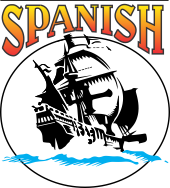This information serves to satisfy AODA (Accessibility for Ontarians with Disabilities Act), Information and Communications Standards, compliance requirements for this website to conform to WCAG 2.0 AA standards.
The Town of Spanish engaged InfoGlobe Communications Inc., an Ontario-based information technology company founded in 1998, to revise the town’s existing website at www.townofspanish.com to comply with WCAG 2.0 AA standards. The revisions were completed in late 2022 and the website you see today was formally launched. At time of completion, www.townofspanish.com complied with WCAG 2.0 AA standards subject to the below provisos.
Existing/Legacy content archived-in-place
The Town’s website was first launched in 2013 and contains much archival content, older pages, etc. This content has been preserved in-place for archival purposes, rather than being removed altogether. Since older content both predates WCAG 2.0 AA standards and becomes less important over time, it has not been revised to comply with standards. Examples include alternative text for pictures and images, specific font/typestyle selections, text colour revisions, etc.
Due to the programmatic nature of the new website, the vast majority of existing legacy website content displays correctly pursuant to WCAG 2.0 AA standards (resizing, text-flow/line-wrapping, contrast, displaying on different size/aspect-ratio screens).
Going Forward
Content materially changed and/or added after the November-2022 website’s initial launch is expected to be fully WCAG 2.0 AA compliant.
Principle 1: Perceivable
 1.1 Text alternatives
1.1 Text alternatives
Text alternatives are provided for any non-text content so that it can be changed into other forms people need, such as large print, braille, speech, symbols or simpler language.
 1.3 Adaptable
1.3 Adaptable
Content is created that can be presented in different ways (for example simpler layout) without losing information or structure. The site can be viewed in a number of different sized screens with varying aspect ratios and all content remains easily viewable.
 1.4 Distinguishable
1.4 Distinguishable
Principle 2: Operable
Content is made easy for users to see and hear including separating foreground from background. High contrast colours, simple and/or colour-washed backgrounds are used for ease of readability.
 2.1 Keyboard Accessible
2.1 Keyboard Accessible
All functionality of the content is operable through a keyboard interface without requiring specific timings for individual keystrokes, except where the underlying function requires input that depends on the path of the user’s movement and not just the endpoints. (This website does not employ dynamic content elements that require manipulation by the user)
 2.2 Enough Time
2.2 Enough Time
Provide users enough time to read and use content. (This website does not employ any time-based restrictions to content)
 2.3 Seizures and Physical Reactions
2.3 Seizures and Physical Reactions
Web pages do not contain anything that flashes more than three times in any one second period, or the flash is below the general flash and red flash thresholds.
 2.4 Navigable
2.4 Navigable
Provide ways to help users navigate, find content, and determine where they are. (This website uses well-organized, persistent menus, together with conveniently-located lines within content to achieve this)
 2.5 Input Modalities
2.5 Input Modalities
Make it easier for users to operate functionality through various inputs beyond keyboard.
Principle 3: Understandable
 3.1 Readable
3.1 Readable
Make text content readable and understandable.
 3.2 Predictable
3.2 Predictable
Make Web pages appear and operate in predictable ways.
 3.3 Input Assistance
3.3 Input Assistance
Help users avoid and correct mistakes. (This website does not employ input-requiring pages at this time)
Principle 4: Robust
 4.1 – Compatible
4.1 – Compatible
Maximize compatibility with current and future user agents, including assistive technologies.
